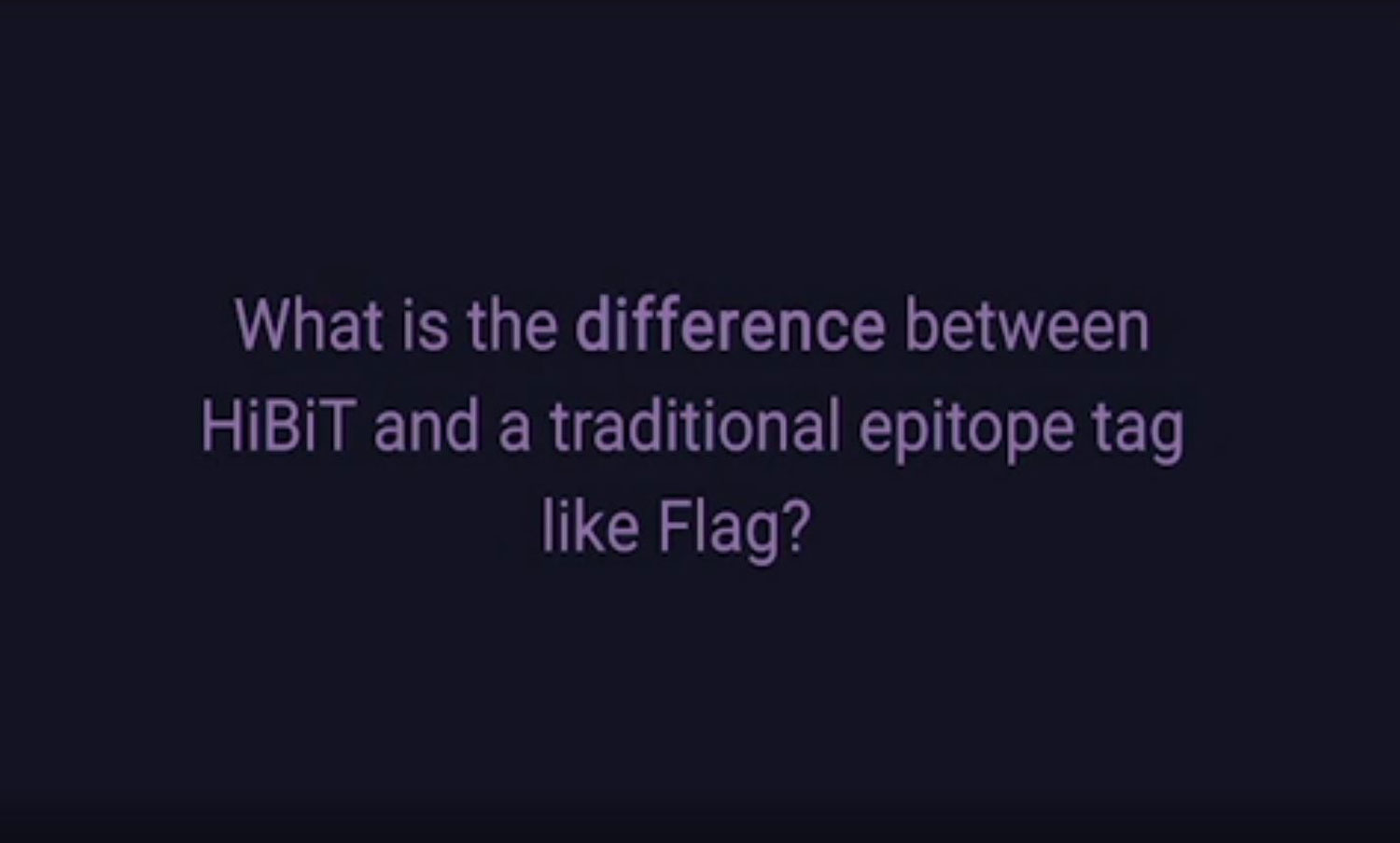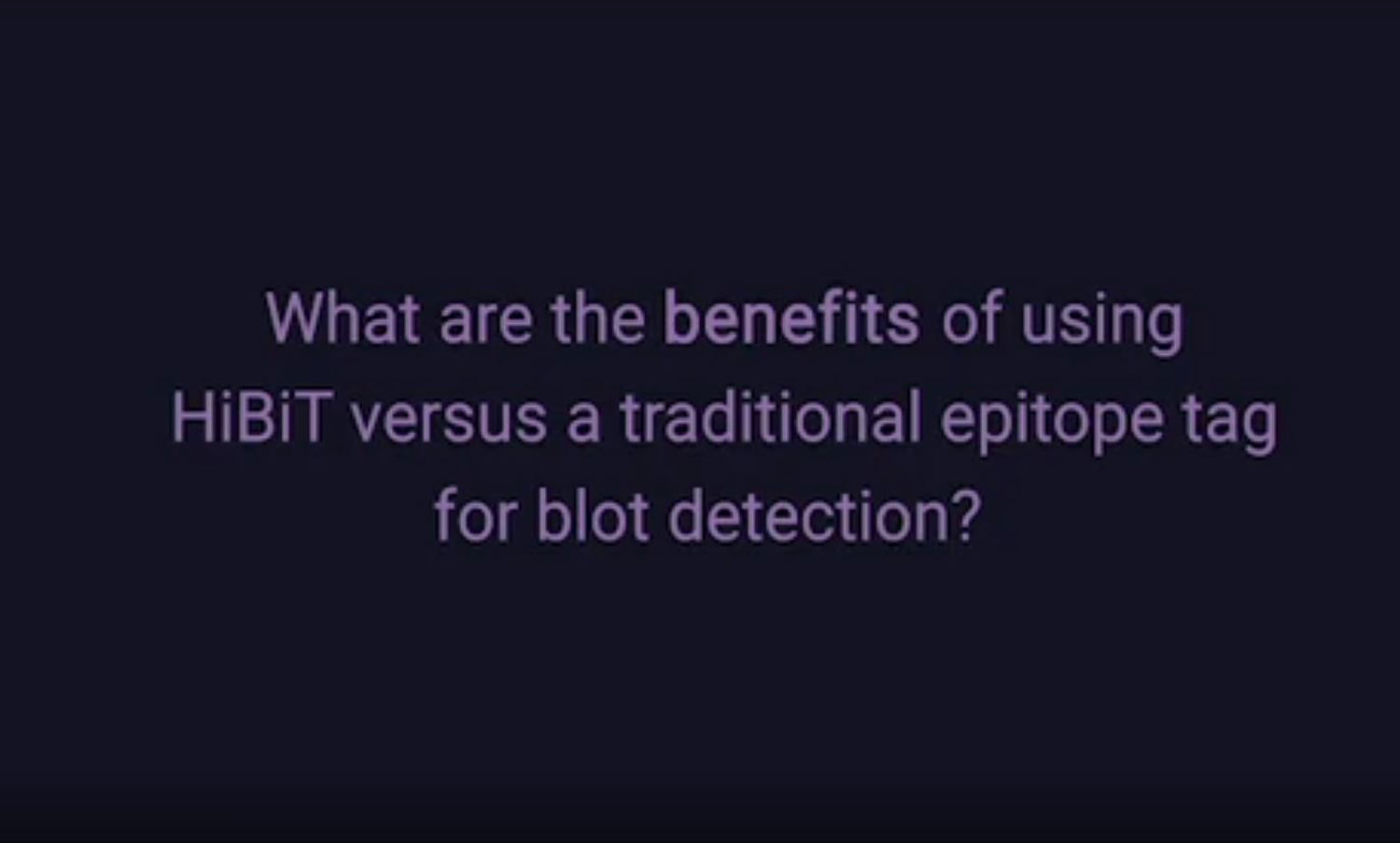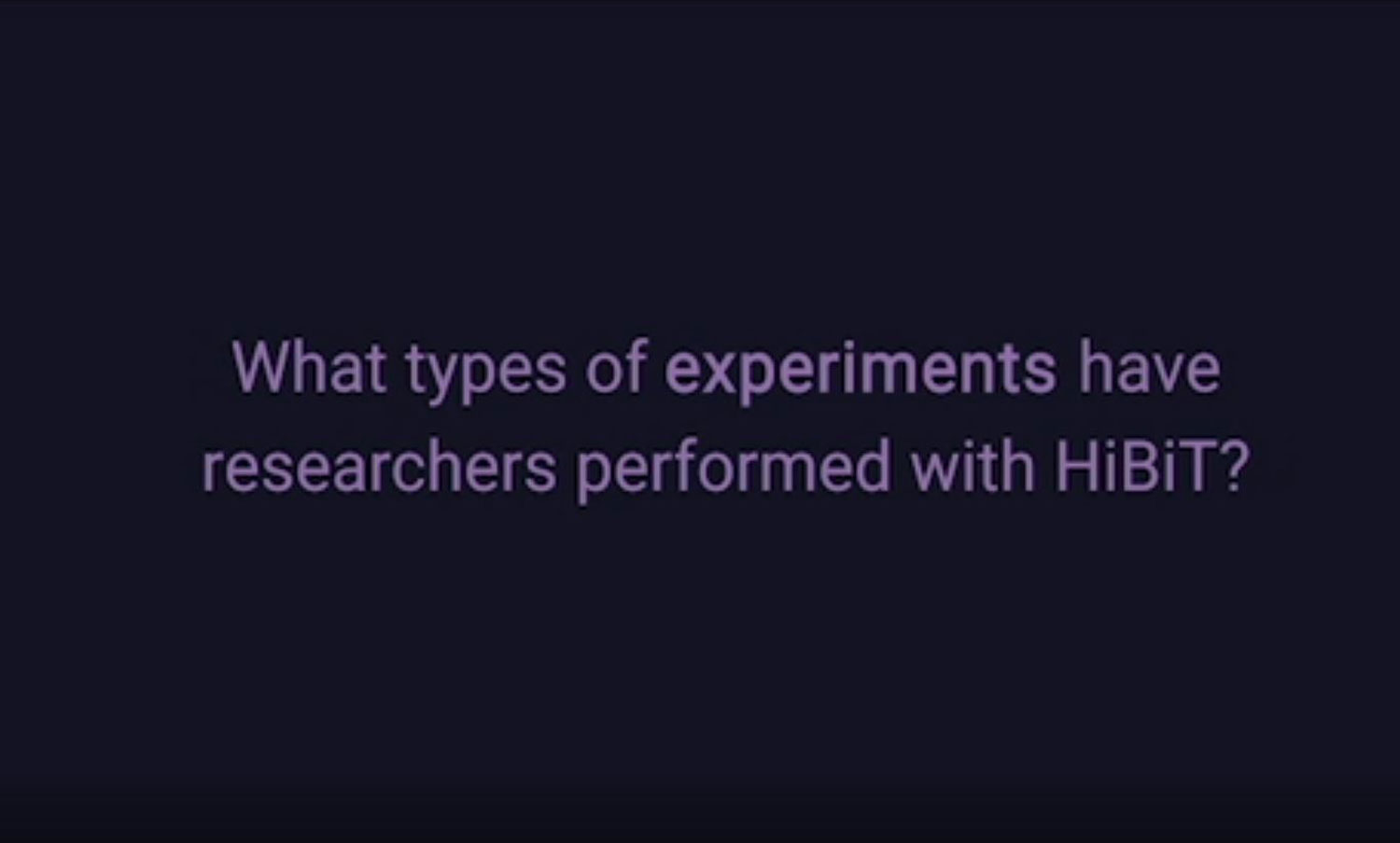HiBiT Blotting: A Fast and Sensitive Western Blot Alternative
- Results in as little as 5 minutes
- No antibody required
- Low background and high sensitivity
- No washing or blocking steps
Compare Protocols
See how HiBiT blotting compares to traditional FLAG methods
What Is HiBiT Blotting?
HiBiT is a bioluminescent detection method based on protein complementation.
The HiBiT tag is added to your protein of interest and detected when the complementary LgBiT subunit binds to HiBiT, forming a functional luciferase enzyme.

HiBiT Is Different from Traditional Epitope Tags
- In traditional Western blotting, you need an antibody to your protein of interest or epitope tag, and a method for detecting that antibody.
- With HiBiT, no antibody is needed, eliminating processing steps and minimizing hands-on time.

Benefits of HiBiT Protein Tagging
- Easy quantitation and detection
- No blocking needed
- No background, unlike antibody-based methods, with HiBiT blotting it doesn't matter if the detection reagent binds non-specifically to the membrane. There will be no luminescent signal except where it has bound to a HiBiT tagged protein.

How HiBiT Tagging Is Being Applied
- Monitoring protein abundance in the cell
- Protein degradation research
- Monitoring receptor internalization
- Inserting and detecting CRISPR knock-ins

See the Data
Download the application note, or visit the Nano-Glo® HiBiT Blotting System product page to learn about the sensitivity and time-saving advantages of the HiBiT tag compared to traditional blotting methods that use an antibody to an epitope tag (e.g., FLAG tag).
References
- Nakashoji, A. et al. (2020) Identification of a Modified HOXB9 mRNA in Breast Cancer. Journal of Oncology. Article ID 6065736,
- Schwinn, M.K. et al. (2020) A Simple and Scalable Strategy for Analysis of Endogenous Protein Dynamics. Sci. Rep. 10(1), 8953.
- Tange, N. et al. (2020) Staurosporine and venetoclax induce the caspase-dependent proteolysis of MEF2D-fusion proteins and apoptosis in MEF2D-fusion (+) ALL cells. Biomed Pharmacother. 128, 110330.
- Ranawakage D.C. et al. (2019) HiBiT-qIP, HiBiT-based quantitative immunoprecipitation, facilitates the determination of antibody affinity under immunoprecipitation conditions. Sci. Rep. 9(1) 6895.
- Sasak, M. et al. (2018) Development of a rapid and quantitative method for the analysis of viral entry and release using a NanoLuc luciferase complementation assay. Virus Res. 243, 69-74.
- Tamura, T. et al. (2019) In Vivo Dynamics of Reporter Flaviviridae Viruses. J Virol. 93(22), e01191-19.